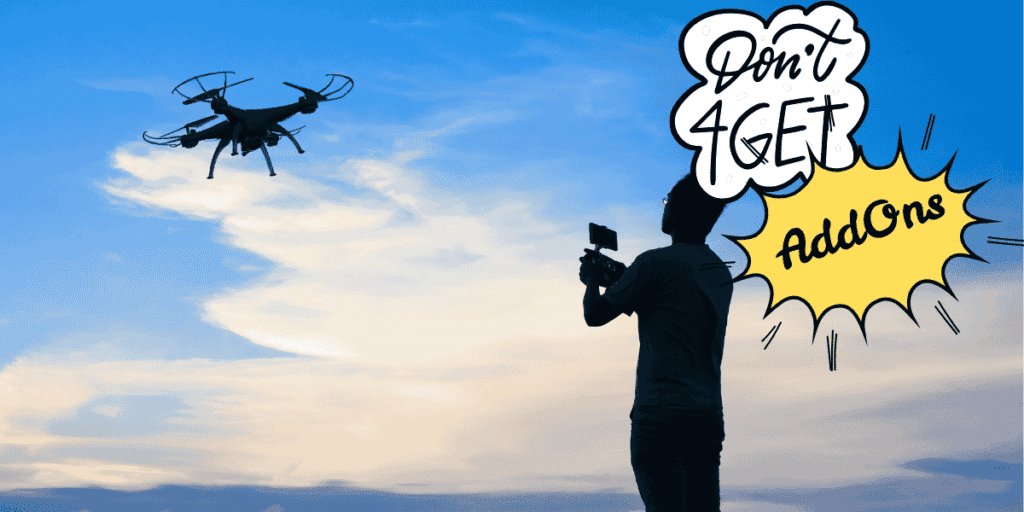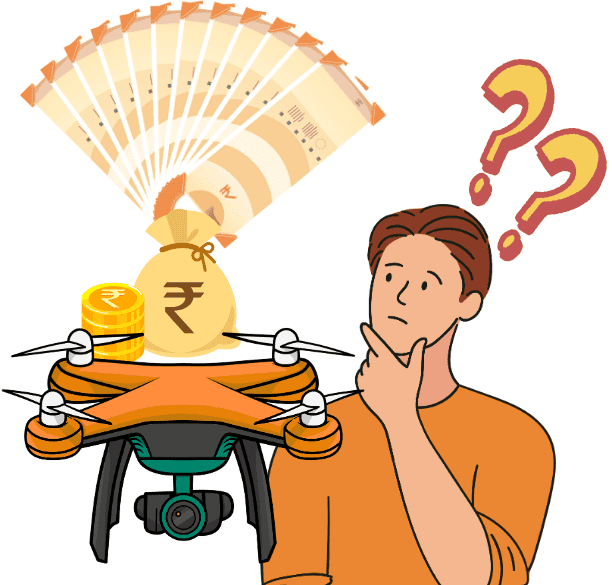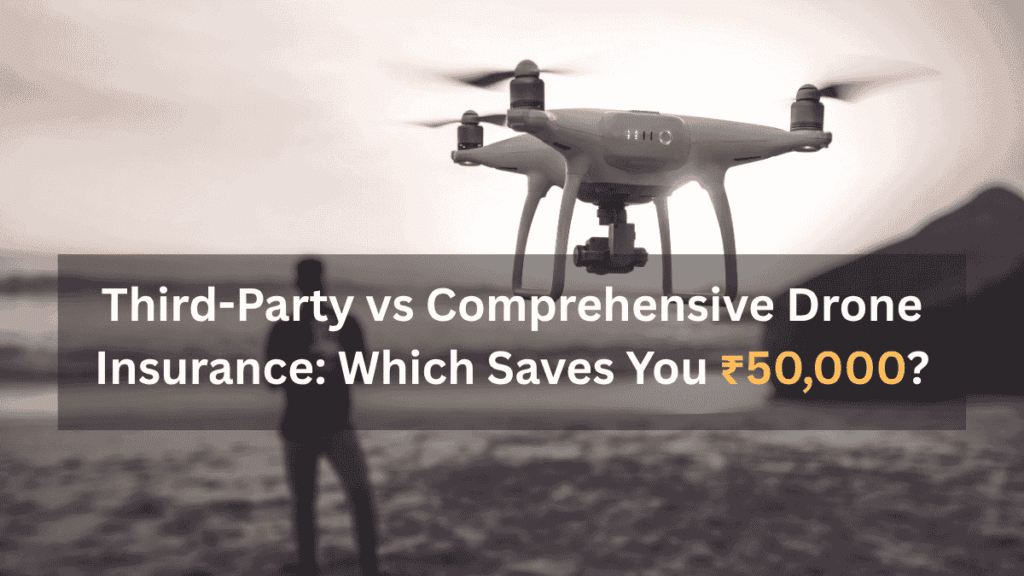In the rapidly evolving world of drone technology, understanding the differences between Third-Party vs Comprehensive Drone Insurance has become a critical consideration for both commercial and recreational drone operators in India. With the Directorate General of Civil Aviation (DGCA) mandating third-party liability insurance for all commercial drone operations, navigating the complexities of drone insurance is no longer optional—it’s essential for legal compliance, risk management, and financial protection. Whether you’re flying a basic quadcopter for aerial photography or managing a fleet of high-end drones for industrial surveys, choosing the right insurance plan ensures not just peace of mind, but also protection against potentially costly liabilities or equipment damage.
This comprehensive guide compares third-party and comprehensive drone insurance, helping you determine which option can save you up to ₹50,000 while ensuring your drone operations are legally compliant and financially secure.
Why Drone Insurance Matters in India
Drone insurance is a specialized form of coverage designed to protect drone owners and operators from the financial risks associated with drone operations. In India, drone insurance is not just a financial safeguard but also a legal requirement for commercial drone pilots. According to the DGCA’s Drone Rules 2021, all drones weighing more than 250 grams must have a valid third-party liability insurance policy. This mandate ensures that drone operators are financially protected against potential liabilities, such as damage to third-party property or bodily injury caused by their drones.
However, while third-party insurance is mandatory, it’s not the only option available. Comprehensive drone insurance offers broader coverage, including protection for the drone itself (hull cover), payload, equipment, and even personal accidents. Choosing the right type of insurance can mean the difference between being financially burdened by a claim or having peace of mind during your operations.
Third-Party vs Comprehensive Drone Insurance: A Detailed Comparison
To help you make an informed decision, let’s break down the key differences between third-party and comprehensive drone insurance.
Types of Coverage
- Third-Party Insurance:
- This is the minimum required coverage for commercial drone operations in India.
- It protects the drone operator against legal liabilities arising from:
- Damage to third-party property (e.g., if your drone crashes into someone’s car).
- Bodily injury or death caused to a third party (e.g., if your drone injures a bystander).
- It does not cover any damage to your own drone.
- Comprehensive Insurance:
- This type of insurance includes all the coverages of third-party insurance and extends to:
- Hull Cover: Protects against loss, damage, or theft of the drone itself.
- Payload Cover: Covers damage to the drone’s payload, such as cameras, sensors, or other attached equipment.
- Equipment Cover: Protects spare parts and other related equipment.
- Personal Accident Cover: Provides coverage for injuries sustained by the drone operator during operations.
- Add-ons: Optional coverages for specific operations, such as:
- Beyond Visual Line of Sight (BVLOS): For drones flying beyond the pilot’s direct line of sight.
- Night Flying: For operations conducted after sunset or before sunrise.
- RPTO/Training Cover: For drones used in training or by certified Remote Pilot Training Organizations (RPTOs).
- This type of insurance includes all the coverages of third-party insurance and extends to:
Mandatory vs Optional
- Third-Party Insurance: Mandatory for all commercial drone operations as per DGCA rules.
- Comprehensive Insurance: Not mandatory but highly recommended for operators who want full protection for their drone and themselves.
Cost Comparison
- Third-Party Insurance:
- Typically starts from around ₹4,000 per year.
- Ideal for operators with basic drones or those who fly in low-risk areas.
- Comprehensive Insurance:
- Premiums range from ₹10,000 to ₹50,000 or more, depending on the drone’s value, coverage limits, and add-ons.
- Best suited for operators with expensive drones or those engaging in high-risk operations like BVLOS or night flying.
When to Choose Each
- Third-Party Insurance:
- Best for:
- Operators who fly in controlled environments with minimal risk of drone damage.
- Those with budget constraints who are confident in their piloting skills.
- Recreational drone users (though note that recreational flying may not require insurance in India as of now).
- Best for:
- Comprehensive Insurance:
- Best for:
- Operators with high-value drones (e.g., DJI Inspire 2, which can cost ₹5 lakhs or more).
- Those engaging in high-risk operations like BVLOS, night flying, or industrial applications.
- Businesses that rely on drones for critical operations and cannot afford downtime due to drone damage.
- Best for:
Comparison Table: Third-Party vs Comprehensive Drone Insurance
Below is a detailed comparison table based on the coverage, cost, and suitability of each type of insurance:
| Aspect | Third-Party Insurance | Comprehensive Insurance |
|---|---|---|
| Coverage | – Third-party property damage – Third-party bodily injury/death | – Third-party liabilities – Hull (drone body) – Payload (camera, sensors) – Equipment (spare parts) – Personal accident – Add-ons (BVLOS, night flying, RPTO) |
| Mandatory | Yes, for commercial drones >250g | No, but recommended for full protection |
| Cost | ₹4,000–₹10,000/year (approx.) | ₹10,000–₹50,000/year (approx.), depending on add-ons |
| Best For | – Low-risk operations – Budget-conscious operators – Basic drones | – High-value drones – High-risk operations (BVLOS, night flying) – Commercial businesses |
| Limitations | Does not cover drone damage or theft | Higher premium, but covers all risks |
Note: Costs are indicative and may vary based on drone type, usage and insurer.
Real Claim Scenarios: Why Comprehensive Insurance Can Save You ₹50,000
Understanding potential claim scenarios can help you appreciate the value of comprehensive insurance. Let’s look at some real-world examples:
1. Hull Damage
- Scenario: Your drone crashes during a commercial shoot, and the repair cost is estimated at ₹50,000.
- Third-Party Insurance: Does not cover this, leaving you to pay the entire amount out of pocket.
- Comprehensive Insurance: Covers the repair cost, saving you ₹50,000.
- Cost Insight: Hull damage costs can range from ₹20,000 to ₹2 lakhs, depending on the extent of damage and the drone model.
2. Third-Party Property Damage
- Scenario: Your drone accidentally crashes into a bystander’s car, causing ₹20,000 worth of damage.
- Third-Party Insurance: Covers the third-party damage.
- Comprehensive Insurance: Covers the third-party damage and any damage to your drone.
3. BVLOS Operation Accident
- Scenario: While flying beyond visual line of sight (BVLOS), your drone collides with another object, damaging both your drone and a third party’s property.
- Third-Party Insurance: Covers only the third-party damage.
- Comprehensive Insurance with BVLOS Add-on: Covers both third-party damage and your drone’s repair costs.
4. Night Flying Incident
- Scenario: During a night shoot, your drone crashes due to poor visibility, causing ₹30,000 in damage to the drone and ₹10,000 to a third party.
- Third-Party Insurance: Covers only the third-party damage.
- Comprehensive Insurance with Night Flying Add-on: Covers both your drone’s damage and the third-party liability.
These scenarios highlight how comprehensive insurance can save you significant amounts by covering not just legal liabilities but also the cost of repairing or replacing your drone.
When to Choose Add-ons: BVLOS and Night Flying

Drone operations can vary widely, and certain activities come with higher risks. Add-ons are additional coverage options that can be included in a comprehensive insurance policy to tailor it to your specific needs. Here’s when you might consider them:
1. BVLOS (Beyond Visual Line of Sight) Cover
- What It Covers: Protects against accidents or incidents that occur when flying the drone beyond the pilot’s direct line of sight.
- When to Choose:
- If you operate drones for large-scale mapping, surveillance, or delivery services where BVLOS flying is necessary.
- BVLOS operations are riskier due to reduced direct oversight, making this add-on essential for financial protection.
- Cost: Typically increases the premium by 10–20%, depending on the insurer.
2. Night Flying Cover
- What It Covers: Extends coverage to drone operations conducted during nighttime hours.
- When to Choose:
- If you’re involved in nighttime photography, surveillance, or other activities requiring night flying.
- Night flying increases the risk of collisions due to reduced visibility, making this add-on crucial for operators in such scenarios.
- Cost: Similar to BVLOS, it may increase the premium by 10–20%.
3. RPTO/Training Cover
- What It Covers: Protects training drones certified by the DGCA.
- When to Choose:
- If you’re part of a Remote Pilot Training Organization (RPTO) or use drones for educational purposes.
- Cost: Varies based on the number of drones and training frequency.
Key Tip: Always assess your operational needs before purchasing add-ons. If you don’t plan to fly BVLOS or at night, you can save on premiums by opting for a basic comprehensive policy without these add-ons.
Which Insurance Saves You ₹50,000?

The choice between third-party and comprehensive insurance ultimately depends on your specific needs, the value of your drone, and the nature of your operations. Here’s a quick guide to help you decide:
- If You Have a Basic Drone and Fly in Low-Risk Areas:
- Third-party insurance might suffice, as it meets the legal requirement and covers basic liabilities.
- Cost Savings: You could save ₹6,000–₹46,000 per year by avoiding comprehensive coverage.
- If You Have an Expensive Drone or Engage in High-Risk Operations:
- Comprehensive insurance is a must, as it protects your investment and covers a wider range of risks.
- Potential Savings: If your drone suffers ₹50,000 in hull damage, comprehensive insurance saves you from paying out of pocket.
- If You Fly BVLOS or at Night:
- Add-ons for BVLOS and night flying are essential to cover the increased risks associated with these operations.
Real-World Example:
- A commercial drone operator with a DJI Mavic 3 (worth ₹2 lakhs) who flies BVLOS for mapping projects should opt for comprehensive insurance with BVLOS add-on. If the drone crashes during a BVLOS flight, causing ₹50,000 in damage, comprehensive insurance would cover it, while third-party insurance would not.
FAQs on Third-Party vs Comprehensive Drone Insurance
Q.1: Is drone insurance mandatory in India?
Ans: Yes, as per the DGCA’s Drone Rules 2021, third-party liability insurance is mandatory for all commercial drone operations involving drones weighing more than 250 grams. This ensures financial protection against damages or injuries caused to third parties.
Q.2: What is the difference between third-party and comprehensive drone insurance?
Ans:
- Third-party insurance covers liabilities such as damage to third-party property and injury or death to others.
- Comprehensive insurance includes all third-party coverages and adds protection for your own drone (hull), payload, equipment, personal accident, and optional add-ons like BVLOS and night flying.
Q.3: How much does drone insurance cost in India?
Ans:
- Third-party insurance typically costs around ₹4,000–₹10,000 per year.
- Comprehensive insurance ranges from ₹10,000 to ₹50,000 or more annually, depending on the drone’s value, coverage type, and optional add-ons.
Q.4: When should I choose comprehensive drone insurance?
Ans: Choose comprehensive insurance if:
- You own a high-value drone (e.g., DJI Inspire 2).
- You perform BVLOS or night operations.
- Your drone is used for critical commercial tasks where downtime is costly.
It protects your drone investment and reduces the risk of out-of-pocket expenses from accidents or damage.
Q.5: What are BVLOS and night flying add-ons, and do I need them?
Ans:
- BVLOS (Beyond Visual Line of Sight) add-on covers risks when flying drones beyond the operator’s direct vision.
- Night flying add-on extends coverage for drone operations during nighttime.
You should opt for these if your drone activities include mapping, surveillance, night photography, or other high-risk operations.
Q.6: Can drone insurance save me ₹50,000 or more?
Ans: Absolutely. For instance, if your drone suffers hull damage worth ₹50,000, comprehensive insurance will cover it, whereas third-party insurance will not. This can save you from major out-of-pocket costs in case of accidents.
Q.7: I only fly my drone recreationally. Do I need insurance?
Ans: Recreational drone flying currently does not require insurance in India, but it’s still wise to consider at least third-party insurance if you fly in public spaces to mitigate any potential third-party damage or liability.
Conclusion: Make the Right Choice
Choosing the right drone insurance in India is not just about compliance; it’s about protecting your investment and ensuring peace of mind during operations. While third-party insurance is mandatory and covers basic liabilities, comprehensive insurance offers broader protection, including coverage for your drone and additional risks. By understanding your needs and the potential savings from avoiding out-of-pocket expenses, you can make an informed decision that could save you up to ₹50,000 or more in the long run.
Remember, aerial photographers and commercial drone operators often waste ₹18,000 per year on wrong policies. Don’t let that be you. Assess your needs, compare policies, and choose wisely.

